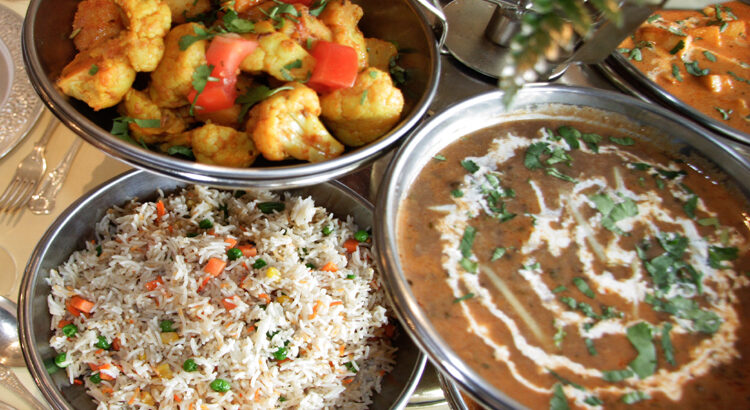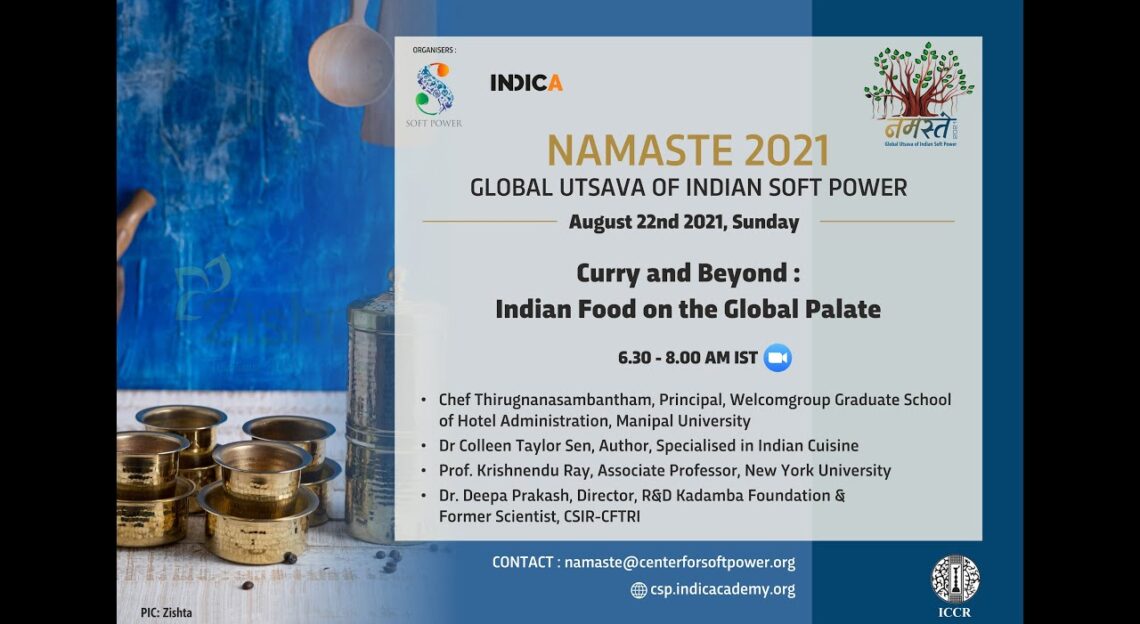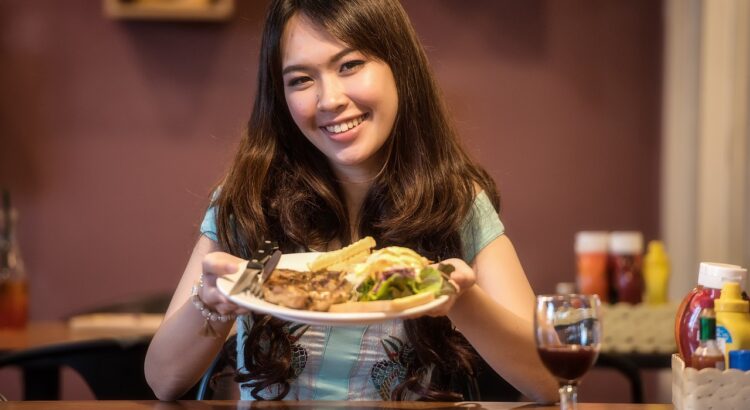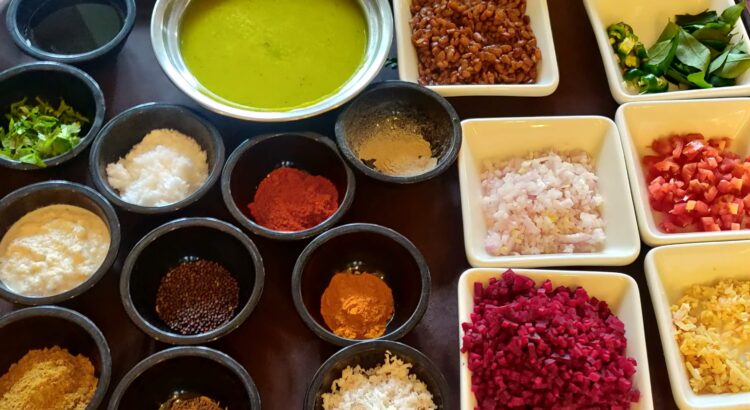Traditional Indian meals – the thalis and the ones that used to be served on a banana leaf are all about balanced diet. According to Ayurveda, a simple formula to balanced diet is to include - the six Ayurvedic tastes or Rasas: sweet, sour, salty, bitter, pungent, and astringent in every meal. It is believed that including all six tastes in every meal will ensure a balanced meal and a feeling of satisfaction preventing snacking and overeating.
Balanced Diet According to Ayurveda and Modern Science – is the title of the academic paper by Dr Arbune Anadrao and Dr Suchitra Shrikhande in PARIPEX - INDIAN JOURNAL OF RESEARCH | Volume-9 | Issue-1 | January – 2020.
Here are insights from the article for us to better understand the concept of Ayurveda that believes good health starts with proper metabolism of food and good robust digestion.
 It is based on the premise that food, when consumed according to our personal physiological needs, acts like a medicine balancing our metabolism and promoting vitality. Ayurvedic Diet based on the principles of Ayurvedic medicine and focuses on balancing different types of energy within your body, which is said to improve health. Unlike many other diets, the Ayurvedic diet provides personalized recommendations about which foods to eat and avoid based on your body type. It's also popular because it's not only said to promote better health for your body but also your mind.
It is based on the premise that food, when consumed according to our personal physiological needs, acts like a medicine balancing our metabolism and promoting vitality. Ayurvedic Diet based on the principles of Ayurvedic medicine and focuses on balancing different types of energy within your body, which is said to improve health. Unlike many other diets, the Ayurvedic diet provides personalized recommendations about which foods to eat and avoid based on your body type. It's also popular because it's not only said to promote better health for your body but also your mind.
A BALANCED DIET IS A HEALTHY DIET
To be able to function properly, our body needs all the nutrients that come from foods, that is proteins, carbohydrates (sugar) and fats, plus vitamins and minerals. To help maintain a healthy weight and have the best chance to stay in good health, balance is key.
VATA-PACIFYING DIET: Vata is balanced by a diet of freshly cooked, whole foods that are soft or mushy in texture, rich in protein and fat, seasoned with a variety of warming spices, and served warm or hot.
- Protein: small amounts of poultry, seafood, tofu
- Dairy: milk, butter, yogurt, cheese, ghee
- Fruits: fully ripe, sweet, and heavy fruits, such as bananas, blueberries, strawberries, grapefruit, mangoes, peaches, and plums
- Vegetables: cooked vegetables, including beets, sweet potatoes, onions, radishes, turnips, carrots, and green beans
- Legumes: chickpeas, lentils, mung beans
- Grains: Cooked oats, cooked rice
- Nuts and seeds: Any, including almonds, walnuts, pistachios, chia seeds, flax seeds, and sunflower seeds
- Herbs and spices: cardamom, ginger, cumin, basil, cloves, oregano, thyme, black pepper
PITTA-PACIFYING DIET: Pitta is balanced by a diet of fresh, whole foods (both cooked and raw) that are cooling, hearty, energizing, comparatively dry, and high in carbohydrates.
- Protein: poultry in small amounts, egg whites, tofu
- Dairy: milk, ghee, butter
- Fruits: sweet, fully ripe fruits like oranges, pears, pineapples, bananas, melons, and mangoes
- Vegetables: sweet and bitter veggies, including cabbage, cauliflower, celery, cucumber, zucchini, leafy greens, sweet potatoes, carrots, squash, and Brussels sprouts
- Legumes: chickpeas, lentils, mung beans, lima beans, black beans, kidney beans
- Grains: barley, oats, basmati rice, wheat
- Nuts and seeds: small amounts of pumpkin seeds, flax seeds, sunflower seeds, coconut
- Herbs and spices small amounts of black pepper, cumin, cinnamon, cilantro, dill, turmeric
KAPHA-PACIFYING DIET: Kapha is balanced by a diet of freshly cooked, whole foods that are light, dry, warming, well spiced, and relatively easy to digest—ideally served warm or hot.
- Protein: poultry in small amounts, seafood, egg whites
- Dairy:s kim milk, goat milk, soy milk
- Fruits: apples, blueberries, pears, pomegranates, cherries, and dried fruit like raisins, figs, and prunes
- Vegetables: asparagus, leafy greens, onions, potatoes, mushrooms, radishes, okra
- Legumes: any, including black beans, chickpeas, lentils, and navy beans
- Grains: oats, rye, buckwheat, barley, corn, millet
- Nuts and seeds: small amounts of pumpkin seeds, sunflower seeds, flax seeds
- Herbs and spices: any, including cumin, black pepper, turmeric, ginger, cinnamon, basil, oregano, and thyme.
Basic Ayurvedic eating practices include:
Intake of six rasas or tastes.
Eat mindfully and with concentration.
Avoid talking, laughter, and other distractions to fully appreciate your meal and the wholesome benefits it provides.
Eat slowly enough
that you can savor the taste of the food.
Eat quickly enough to prevent the food from getting cold.
Eat the proper quantity of food. Be aware of hunger signals and signs of fullness to avoid overeating.
Eat only when your previous meal has been digested
THE WHO (THE WORLD HEALTH ORGANIZATION) HAS GIVEN RECOMMENDATIONS IN THE BASIS OF NUTRITION:
- Eat roughly the same amount of calories that your body uses. Healthy body weight = “calories in”- “calories out”.
- Eat a lot of plant foods: vegetables, legumes, whole grains, fruits and nuts.
- Limit your intake of fats, preferring the healthier unsaturated fats to saturated fats and trans fats.
- Limit your intake of granulated sugar, ideally less than 10g/day.
- Limit salt / sodium consumption from all sources
A BALANCED DIET IS PLEASURE: A balanced diet should bring us our body needs, no more, no less, but it must not be strictly followed every day; equilibrium can be achieved over several days.
THE IDEAL DIET
Restrict saturated fat to < 10 or < 7% calories
Avoid trans fatty acid sources
Moderately augment mono- and polyunsaturated fat to maintain total intake above 25%
Restrict cholesterol to < 300 or < 200 mg daily
Augment fruit and vegetable intake for soluble fiber content
Favor complex carbohydrates
Reduce salt intake
SUMMARY :
- Don't Suppress Appetite.
- Eat whenever you feel appetite.
- Eat two times a day.
- Don't overeat.
- Eat food in their natural form.
- Eat food within 48 minutes of cooking.
- Eat food cooked at home. 8. Eat food with a calm mind.
REFERENCES:
- Kaviraj Ambika Datta Shastri;’’Ayurved TatvaSandipika “Hindi Commentary ;’’ “Sushrut Samhita’’ 2. Acharya Vidyadhar Shukla,Prof.Ravi Dutt Tripathi,“Charak Samhita”,Vaidya Manorama Hindi Commentary,Sutra sthan chapter 5 - Matrashitiya.
3. https://www.healthline.com/nutrition/ayurvedic-diet#foods-to-eat
4. https://www.healthline.com/nutrition/ayurvedic-diet - https://www.banyanbotanicals.com/info/ayurvedic-living/living-ayurveda /diet/
- https://www.alimentarium.org/en/knowledge/balanced-diet
- https://www.verywellfit.com/ayurvedic-diet-for-weight-loss-4154620
- https://www.ayurtimes.com/ayurvedic-diet-principles
(Writers Dr Arbune Anadrao is HOD & Prof.vSharer Kriya Dept, RIARCH, Mayani;
Dr Suchitra Shrikhande MD is a Scholar, BM Ayurved College,Nandanvan,Nagpur)







 The survey was done across Mumbai, Delhi NCR, Bengaluru, Hyderabad & Kolkata – 10 cities together and the data revealed that 88% of the people amongst the age group of 25-45 are facing one or other lifestyle issues such as digestion, acne, hair fall, weight management or stress with an average of 3 issues per person.
The survey was done across Mumbai, Delhi NCR, Bengaluru, Hyderabad & Kolkata – 10 cities together and the data revealed that 88% of the people amongst the age group of 25-45 are facing one or other lifestyle issues such as digestion, acne, hair fall, weight management or stress with an average of 3 issues per person.

 Between 2011 and 2013 Nikhil conducted many experiments in his kitchen and did a whole lot of research. “I liked the luxury and lifestyle that came with a career in corporate world. But I jumped into my venture thinking if it doesn’t work, I can always get back to corporate.”
Between 2011 and 2013 Nikhil conducted many experiments in his kitchen and did a whole lot of research. “I liked the luxury and lifestyle that came with a career in corporate world. But I jumped into my venture thinking if it doesn’t work, I can always get back to corporate.” Banana as the Base Ingredient
Banana as the Base Ingredient
 In this scenario, earlier this week Delhi High Court ordered 'Full Disclosure of Manufacturing Ingredients' for food products. This comes after a complaint that many food articles having ingredients sourced from animals are passed off as vegetarian by affixing the green dot. Justice Vipin Sanghi and Justice Jasmeet Singh expressed their displeasure over the failure of the authorities, Central Government and Food Safety and Standards Authority of India in checking the lapses and non compliance of Food Safety Act, 2006.
In this scenario, earlier this week Delhi High Court ordered 'Full Disclosure of Manufacturing Ingredients' for food products. This comes after a complaint that many food articles having ingredients sourced from animals are passed off as vegetarian by affixing the green dot. Justice Vipin Sanghi and Justice Jasmeet Singh expressed their displeasure over the failure of the authorities, Central Government and Food Safety and Standards Authority of India in checking the lapses and non compliance of Food Safety Act, 2006. 
 “I loved that so much that I was attending every class and workshop they offered and this prompted me to train and share all these practices myself.” Lucia eventually left her corporate career to become a Yoga teacher. She also started studying Vedic chanting with Shantala Sriramaiah of Veda Studies in Belgium. Lucia is now back in Italy, where she teaches online, due to the pandemic. Her courses include Hatha Yoga, Restorative Yoga, Yoga Nidra and Hormone Yoga for Women – a dynamic asana sequence aimed at helping women with hormonal imbalances, especially those going through menopause. Along with her Yoga teaching, Lucia has also excelled the art of plant-based and Ayurvedic cooking.
“I loved that so much that I was attending every class and workshop they offered and this prompted me to train and share all these practices myself.” Lucia eventually left her corporate career to become a Yoga teacher. She also started studying Vedic chanting with Shantala Sriramaiah of Veda Studies in Belgium. Lucia is now back in Italy, where she teaches online, due to the pandemic. Her courses include Hatha Yoga, Restorative Yoga, Yoga Nidra and Hormone Yoga for Women – a dynamic asana sequence aimed at helping women with hormonal imbalances, especially those going through menopause. Along with her Yoga teaching, Lucia has also excelled the art of plant-based and Ayurvedic cooking.












 One of the highlights of November was from Subway Singapore. As a response to the increasing demand for plant based protein in Asia, the brand has announced its plant-based Chicken Schnitzel and for this the brand has partnered with Nestle to leverage of the latter's Harvest Gourmet Schnitzel. Subway suggests Schnitzel to be best paired with lettuce, tomato, sweet corn and Subway specially spicy mayonnaise sauce. The plant based Chicken Schnitzel starts $7.50 for a 6 inch and $12.50 for a footlong.
One of the highlights of November was from Subway Singapore. As a response to the increasing demand for plant based protein in Asia, the brand has announced its plant-based Chicken Schnitzel and for this the brand has partnered with Nestle to leverage of the latter's Harvest Gourmet Schnitzel. Subway suggests Schnitzel to be best paired with lettuce, tomato, sweet corn and Subway specially spicy mayonnaise sauce. The plant based Chicken Schnitzel starts $7.50 for a 6 inch and $12.50 for a footlong.
 Indian plant-based meat brand BlueTribe launched vegan Chicken Keema and Chicken Nuggets that will be available in Chandigarh, Mohali, and Panchkula. Soon the brand will launch pea-based chicken and pork sausages. Currently Blue Tribe's market includes Ahmedabad, Bengaluru, Chennai, Delhi, Hyderabad, Kochi, Kolkata, Mumbai, and Pune.
Indian plant-based meat brand BlueTribe launched vegan Chicken Keema and Chicken Nuggets that will be available in Chandigarh, Mohali, and Panchkula. Soon the brand will launch pea-based chicken and pork sausages. Currently Blue Tribe's market includes Ahmedabad, Bengaluru, Chennai, Delhi, Hyderabad, Kochi, Kolkata, Mumbai, and Pune.

 Gita Ramesh has authored two books “Ayurvedic Herbal Massages” and “The Ayurvedic Cookbook” and is on the way of finishing her third book. She has introduced a healthy method of cooking using very less oil, simplistic preparation, vegetables cooked the right amount, and spices used sparingly - and the result is some really delicious preparations that are light on tummy and packed with balanced nutrition.
Gita Ramesh has authored two books “Ayurvedic Herbal Massages” and “The Ayurvedic Cookbook” and is on the way of finishing her third book. She has introduced a healthy method of cooking using very less oil, simplistic preparation, vegetables cooked the right amount, and spices used sparingly - and the result is some really delicious preparations that are light on tummy and packed with balanced nutrition.
